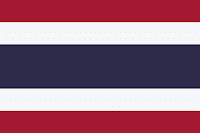* *
* * *
Cebu, Cebu Island, Republic of the
Philippines
Monday 21st October 1996
Cebu Island is long and narrow, stretching
122 miles from north to south, and 20 miles across at its widest
point. It has narrow coastlines, limestone plateaus and coastal plains, with
rolling hills and rugged mountain ranges traversing the northern and southern
lengths of the island. From the air it’s
a beautiful place to behold.
It’s also not that far southeast of Manila
and the Island of Luzon, being a mere 305 NM (350.7 SM), which took 54 minutes
to fly in the 737, on airway W-11 at a cruising altitude of either 29,000 or
33,000 feet.
The city of
Cebu is on the mid-eastern side of Cebu Island and was the first Spanish settlement founded in 1565,
becoming the country's oldest city, and the first capital of the Philippines.
Upon arrival I uncovered a rather strange setup;
although we were servicing the City of Cebu, the airport wasn’t situated
there. Instead it sat in the city of
Lapu-Lapu, on the much smaller Mactan Island southeast of Cebu, connected to
Cebu Island by two bridges. Hence the
airport was called Mactan International.
Here’s an interesting historical
footnote, dear reader.
Losing the favor of King Manuel 1st of Portugal for his plan of reaching the Spice Islands by sailing west from Europe, Magellan offered his services to King Charles 1st of Spain.
On 20th September
1519, Magellan led five ships with a total compliment 250 people from the
Spanish fort of Sanlúcar de Barrameda en route to Southeast Asia via the
Americas and Pacific Ocean. Only three ships reached the Philippines on 16th
March 1521. Rajah Kolambu the king
of Mazaua told them to sail for Cebu, where they could trade and
obtain provisions.
Arriving in Cebu City, Magellan
befriended Rajah Humabon,
and persuaded the natives to ally themselves with King Charles 1st of Spain. Humabon and his wife were given Christian
names and baptized, then on 14th April 1521 Magellan erected a large wooden
cross on the shores of Cebu, and roughly 700 islanders were subsequently baptized.
Magellan soon heard of datu Lapu-Lapu, a native king on nearby Mactan Island, a rival of the Rajahs of Cebu. It was thought that Humabon and Lapu–Lapu had been fighting for control of the flourishing trade in the area.
And because Lapu-Lapu was the first
resistance fighter against Spain, a city on Mactan Island is named after him, where
the airport is located, and is technically labeled Mactan International, except
everybody simply refers to it as “Cebu.”
The single runway (040°/220° magnetic,
NE/SW) at 9,091 feet in length, with a single ILS to Runway Four, was originally
built by the U.S. Air Force in
1956 on the northeast coast of Mactan, as an emergency airport for Strategic Air Command bombers. It
remained a Spartan outpost until the Vietnam War in the 1960s,
when it became a base for a USAF C-130 unit. Later the civilian airport was opened, which
eventually shared the airport with the Philippine Air Force.


























Comments
Post a Comment